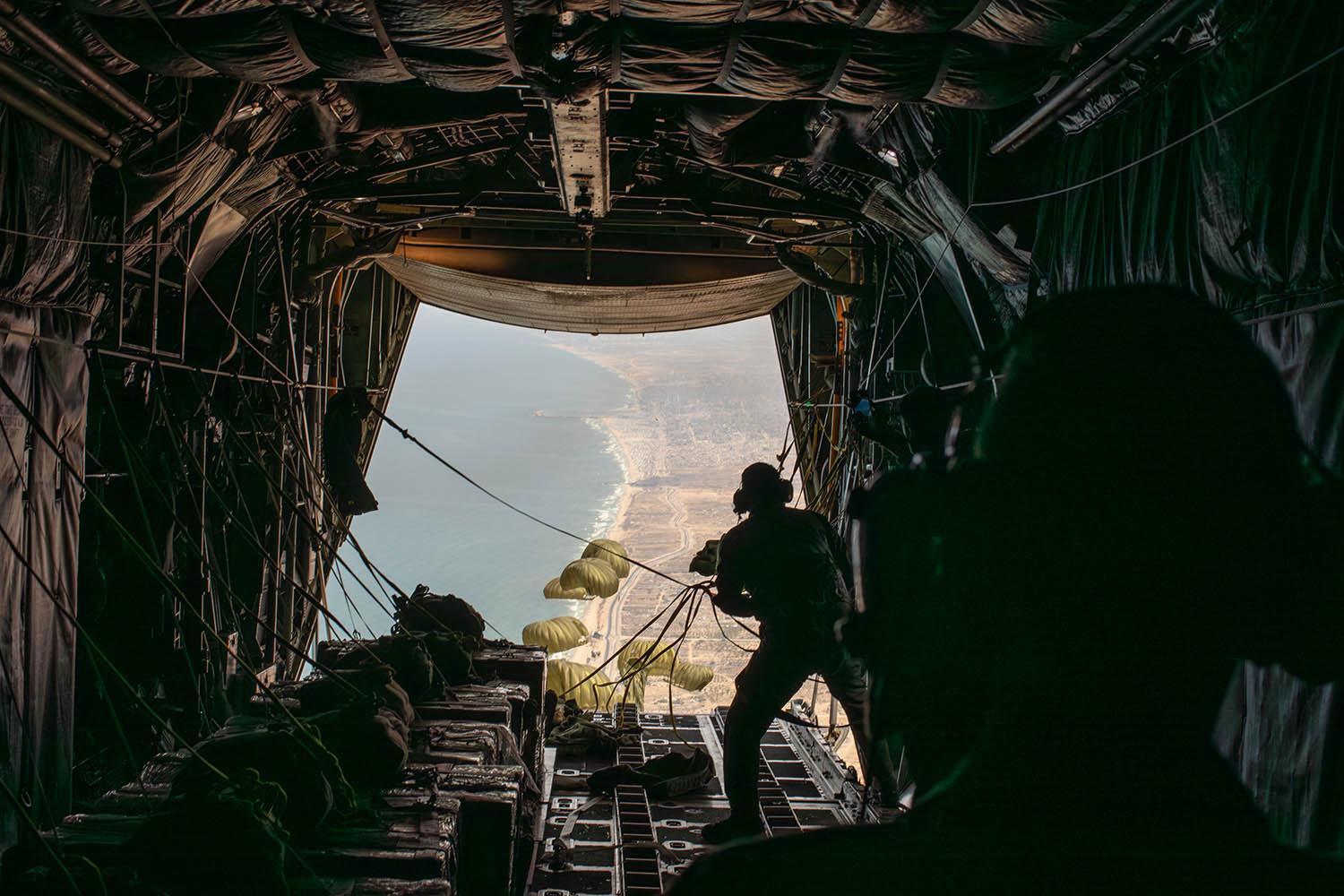As the Jordanian C-130 Hercules swooped over Gaza City, the rear doors yawned open and the first payload of aid rolled out of the belly of the aircraft. Parachutes bloomed, dropping two tonnes of food and medicine.
For the Jordanian air force personnel, many of whom have now flown almost 100 aid drops over Gaza, the work is vital, offering them a chance to do something that may alleviate some small sliver of suffering for the Palestinians below. “I’m a human and I hate to see other humans like that,” flight engineer Mohammad shouted over the rattle of the plane. “I hope this war ends soon, God willing.”
But they also know that dropping pallets of food from 2,500ft is both the most expensive and least effective way to deliver aid.
‘In Gaza, there is a very easy and obvious alternative to airdrops and that is sending aid by road’
Juliette Touma, Unrwa
In the four weeks since Jordan resumed humanitarian drops – supported by France, Germany, the UAE, the Netherlands and Singapore – they have delivered 785 tonnes of aid. This would have been enough to feed half the 2.1 million population of Gaza for a single day. Each drop costs £24,000, compared with £720 for a Cairo-Gaza lorry, which carries double the aid, according to the Center for Strategic and International Studies.
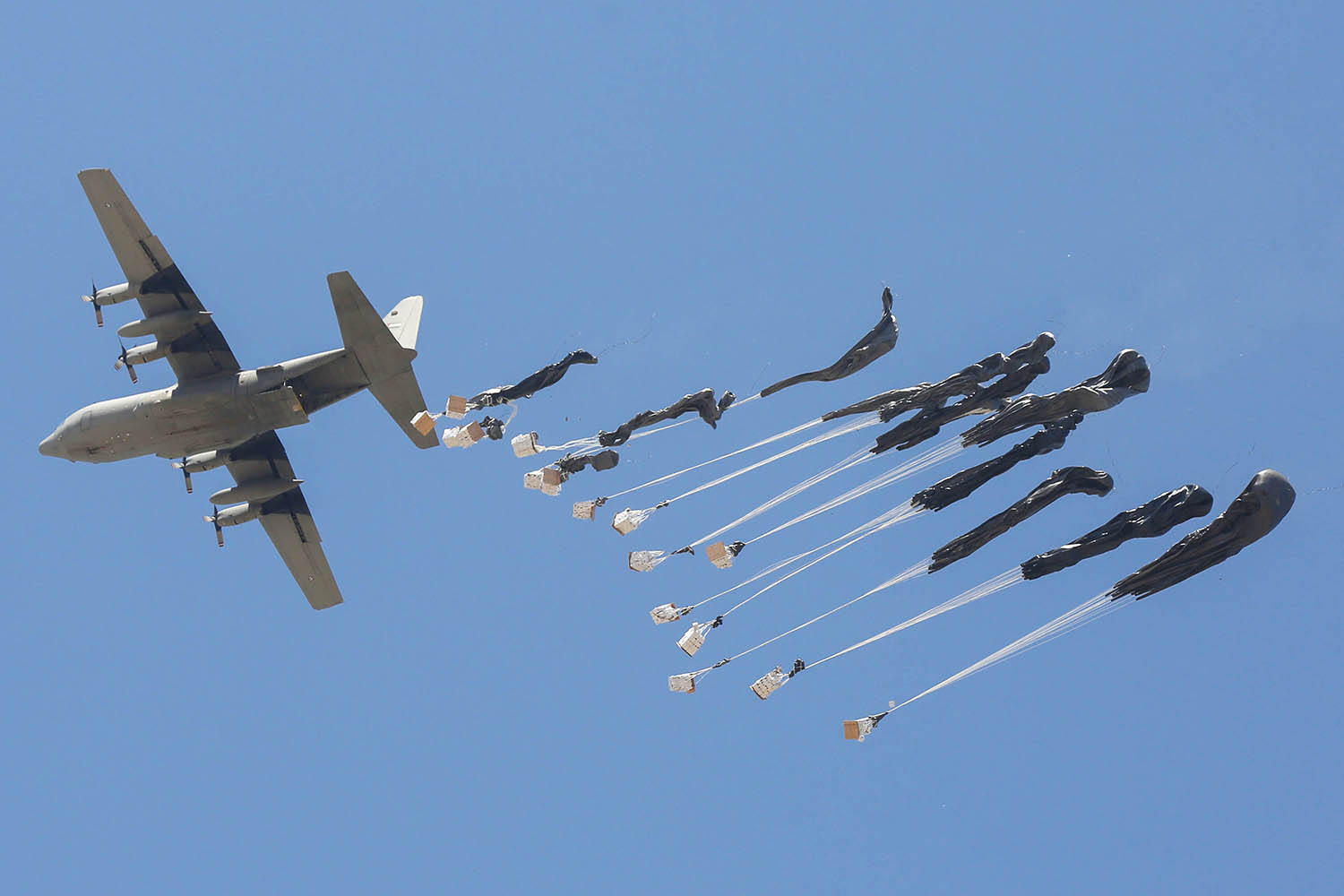
“There is no question that there is goodwill from those member states that aim to help the people of Gaza. However, in humanitarian context situations, airdrops are only used when there is absolutely no alternative,” said Juliette Touma, director of communications for Unrwa, the UN’s relief agency in Palestine, speaking to The Observer. “In Gaza, there is a very easy and obvious alternative, and that is sending aid via the road.”
Before 7 October 2023, Gaza relied on 500 aid and commercial lorries crossing its borders each day, according to the UN. But when the war began, Israel cut off all aid supplies, eventually relenting to allow the UN and some non-governmental organisations to deliver a tiny fraction of what Palestinians needed. Israel imposed a fresh siege in March after the collapse of the ceasefire.
After pressure from the international community, aid has resumed, but most of it has been provided by the US-backed Gaza Humanitarian Foundation that distributes food from just four sites across the territory. More than 1,000 people have been killed trying to access those sites, many of them shot by the Israel Defense Forces (IDF) or US mercenaries.
The result has been famine. On Friday the integrated food security phase classification (IPC), a global system used by the UN and governments to classify the severity of food insecurity, released a report concluding that famine has hit the Gaza governorate, including Gaza City. The famine, the report said, is “entirely man-made. It can be halted and reversed”.
Cogat, the Israeli military unit that manages civilian and security operations in the West Bank and Gaza, called the report “false and biased … based on partial data from the terrorist organisation Hamas”.
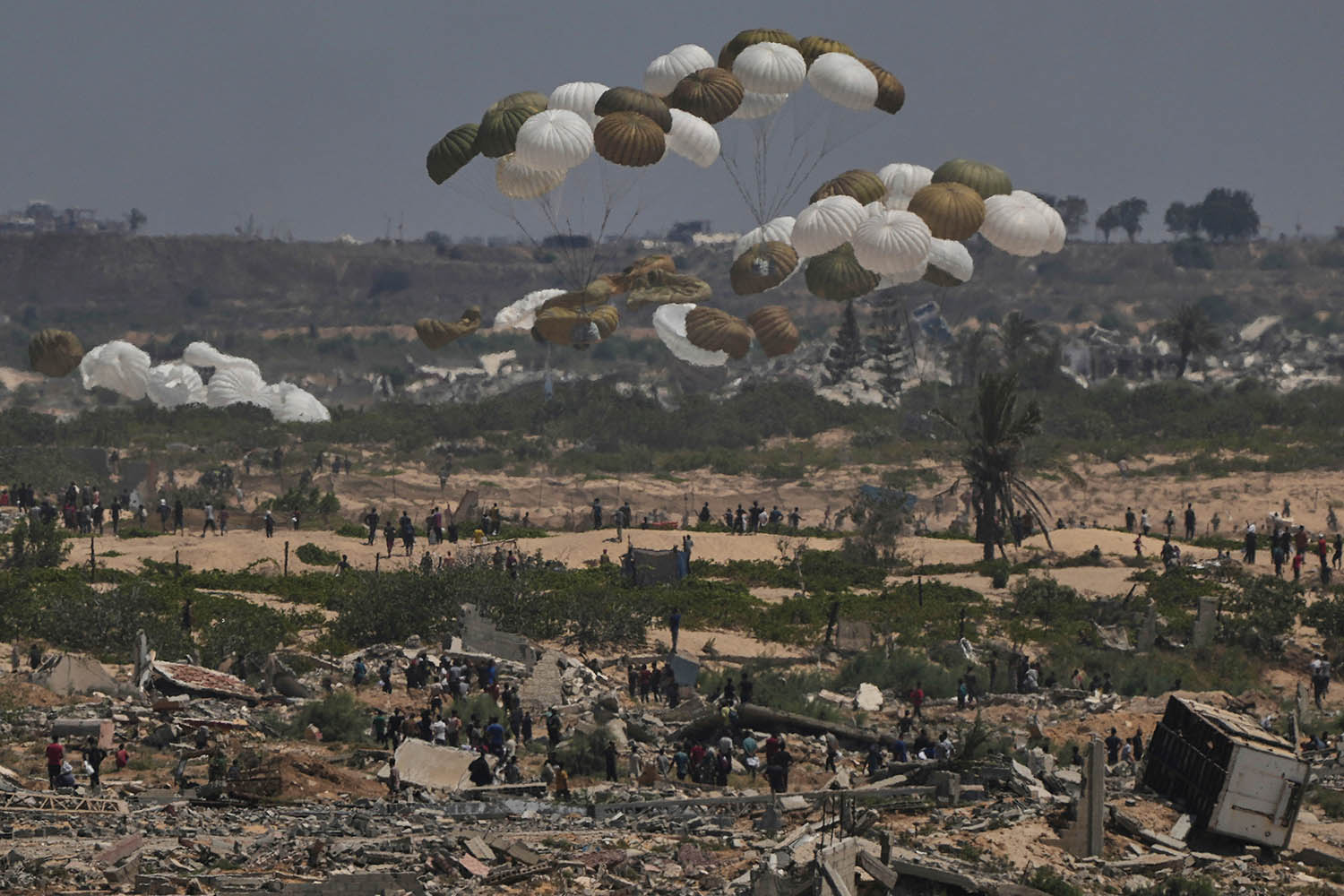
Unable to persuade Israel to allow aid in by road, the international community has been reduced to carrying out the aid drops, which Oxfam has described as symbolic, ineffective and a relief for guilty consciences in Washington.
Many of those living in Gaza are too weak to run the gauntlet of retrieving the aid. The young and strong snatch the boxes from the pallets first, meaning the elderly, disabled and children often go without. Some pallets land in the sea, while Gaza’s government media office said at least 23 people have been killed and 124 wounded by aid air drops.
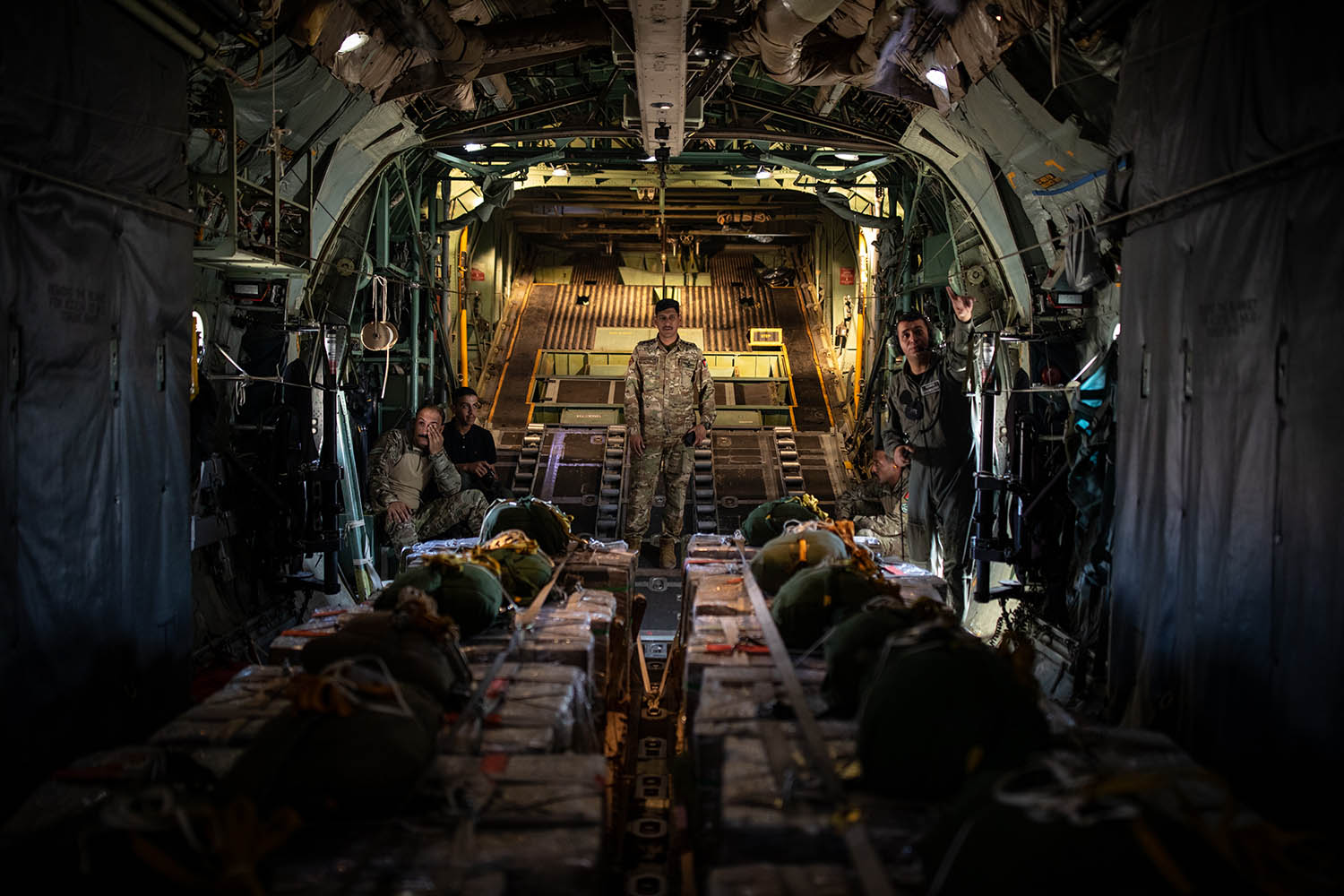
Meanwhile, 5,000 lorries sit waiting at the Rafah border crossing in Egypt. Drivers complain that only between 15 and 20 make it into the Strip each day.
Once inside, Touma say that the vast majority is being looted by desperate people, as there is no infrastructure for delivery. If the UN was given the ability to work without restrictions imposed by Israel after the ceasefire broke down in March, Touma believes the UN could deliver 6,000 lorries of aid in two weeks.
“There are tens of thousands of people who know how to do it, so there would be no issue. And we’ve done it before,” she said. “We’re not asking for the moon here. We’re not talking in theory or in a hypothetical way. We’ve done it on several other occasions during the war. There’s no reason why we can’t do it this time.”
Israel says there is no food shortage, despite the UN secretary general’s deputy spokesperson, Farhan Haq, describing the situation as “beyond catastrophic”.
A report from the Israeli military’s southern command listed “thousands of tonnes of humanitarian aid ready to enter the Strip” through the Kerem Shalom crossing in southern Israel.
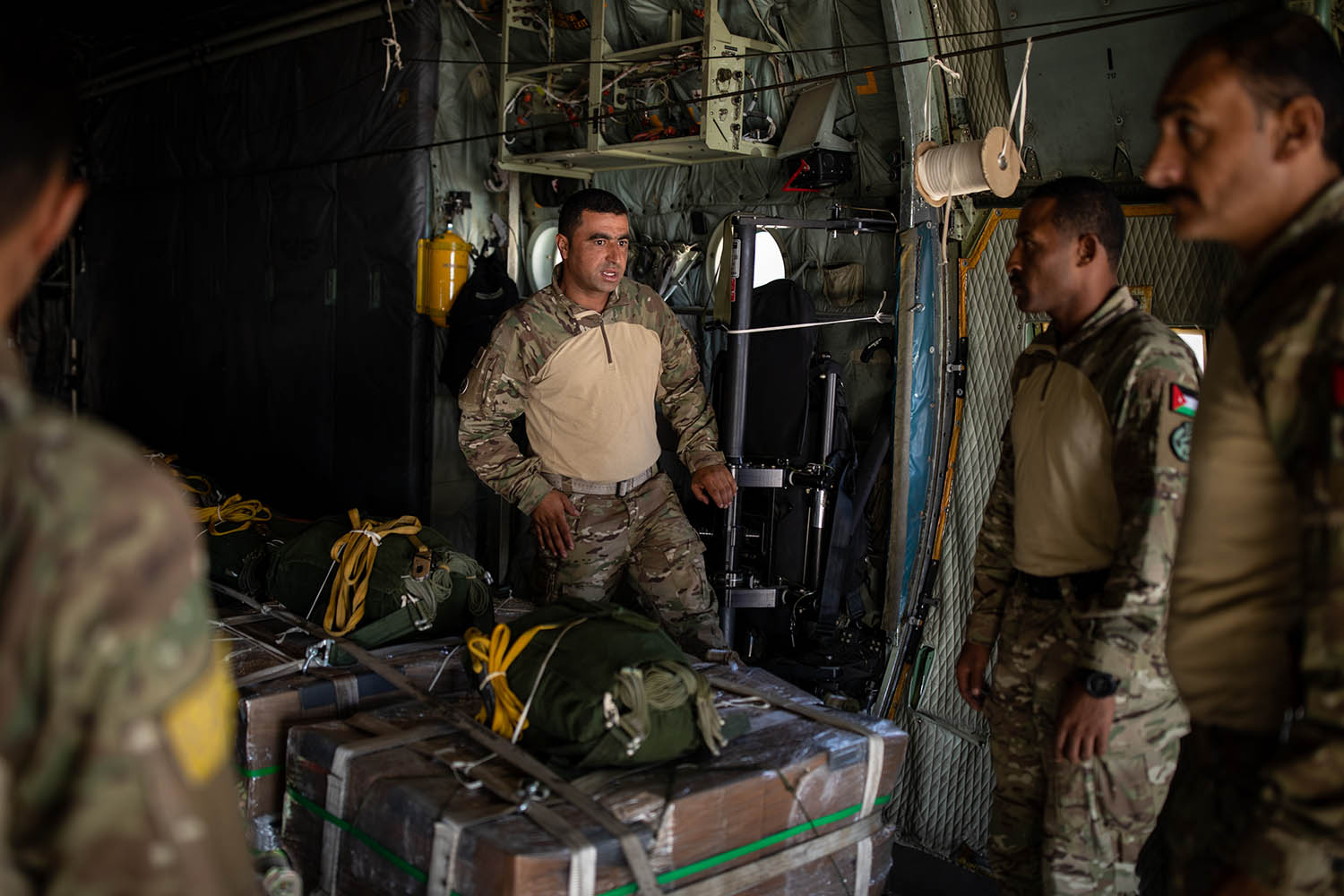
“Hamas, which is aware of the scale of these efforts and the decline of its grip on the population, launched a false and stubborn propaganda campaign about ‘starvation’ in the Strip,” the report claimed. “In fact, the careful follow-up by the IDF shows that there is no starvation in Gaza.” The Israeli military has provided no evidence for this claim.
From the plane, the view was apocalyptic. Blocks of flats listed in the heat and sand like beached tankers. Facades ripped away revealed skeletal ribs of each burned floor. Entire neighbourhoods lay flattened in piles of ash, while tank tracks had carved brutal scars across the earth, leaving utter destruction in their wake.
In some areas, nothing living remained. In others, tiny bodies wandered through the scenes of devastation, their tents sitting precariously close to collapsed buildings.
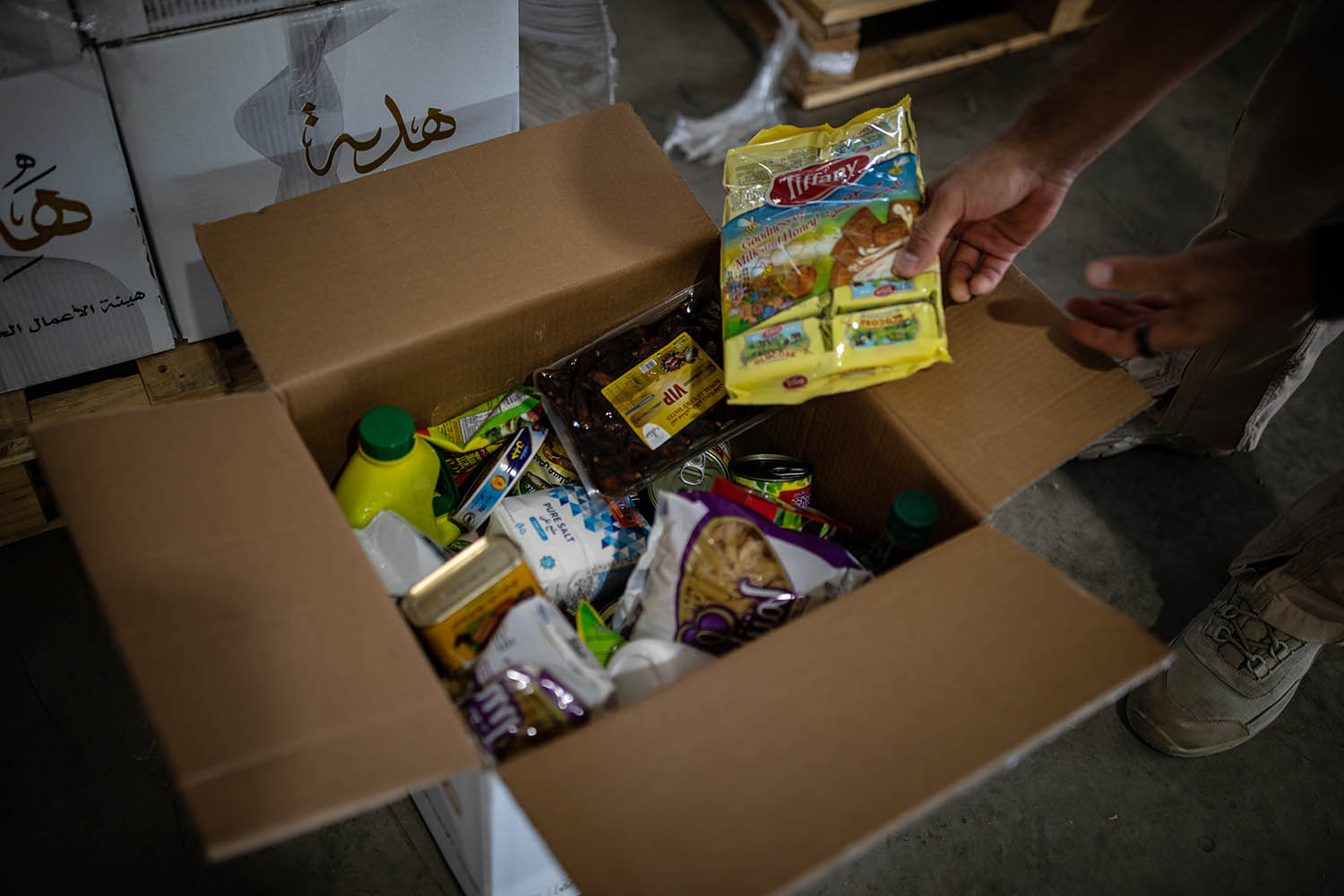
After the aid was dropped, the Jordanian plane closed its doors and sloped away from the suffering below. The tired crew either sat on the floor with their heads in their hands or watched the ground recede from a window with a dejected look in their eyes. At the King Abdullah II airbase near Amman, Col Yussef cast his eye over thousands of boxes of aid waiting in a hangar. The pilot bent down and opened a box. He waved his hands over the dates, rice and canned chicken waiting to be dropped to alleviate the hunger, then sighed.
“The first time I flew over Gaza and saw it, I was shocked. I couldn’t sleep that night as I couldn’t stop thinking about it,” the father of five said, before adding. “If you have children and you see Gaza, you think how you would feel if you couldn’t feed your children, if they were dying of sickness or starvation – it keeps you awake at night.”
Photograph by Oliver Marsden/The Observer. Other pictures by Getty, AP
